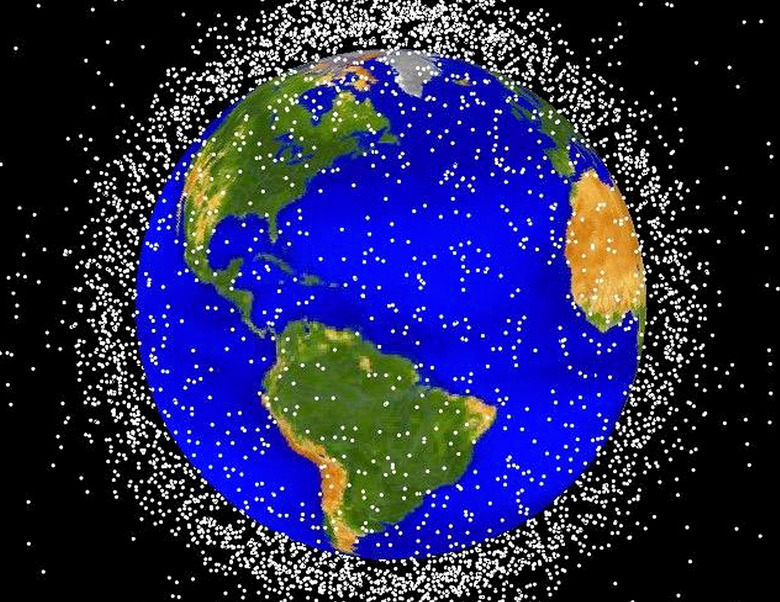There's So Much Junk Floating In Earth Orbit That The ISS Just Added A Debris Sensor
When you look up at the night sky all you see is stars and maybe a distant planet or two, but there's actually a whole lot of garbage floating around in Earth's orbit. The space around our planet is filled with satellites — both functional and long dead — and many of the defunct pieces of hardware have collided with one another, creating even more individual pieces of harmful debris. Now, the problem has gotten so bad that the International Space Station has been forced to install a sensor to detect when it gets hit with bits and pieces of artificial space junk.
The new sensor, which is called simply the Space Debris Sensor (or SDS for short), is designed to monitor any impacts caused by the smaller, untraceable bits of space junk that are simply too tiny for NASA to monitor. The SDS is firmly mounted on the exterior of the International Space Station, where it will remain for up to three years, giving scientists an idea of just how much garbage is colliding with the orbiting laboratory on a regular basis.
"The front layer of the Space Debris Sensor is a thin film of Kapton with acoustic sensors and a grid of resistive wires," NASA explains. "These acoustic sensors measure the time and location of a penetrating impact, while a change in resistance on the grid when lines are broken provide a size estimate of the hole."
To get an even better idea of the potentially damage effects of the debris on orbiting spacecraft, the sensor can also measure the velocity with which it struck the sensor. "Located 15 cm behind the first layer is a second thin layer of Kapton with acoustic sensors to measure the time and location of the second penetration," says NASA. "Velocity is determined by dividing the distance travelled between the first and second impact points by the time it took to travel that distance. An instrumented back layer stops the debris and measures the amount of energy in the collision."
Efforts to clean up manmade space debris have been suggested and even tested, but often fall well short of their stated goals. The Japanese space agency, JAXA, famously sent a garbage-collecting tether into space in the hopes of dragging some larger chunks of space junk into Earth's atmosphere where they would be destroyed. Unfortunately, the tether failed, and the entire operation was deemed a failure.
